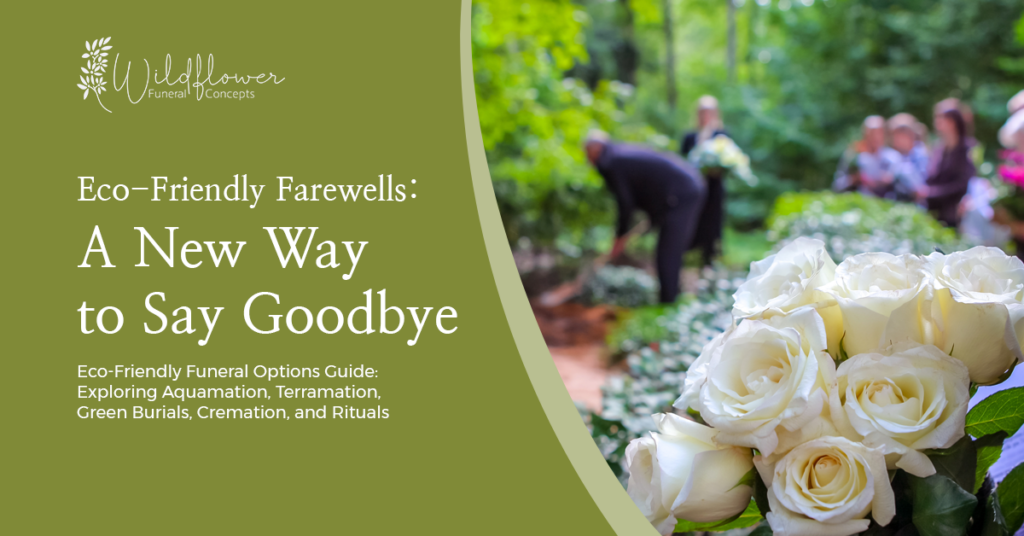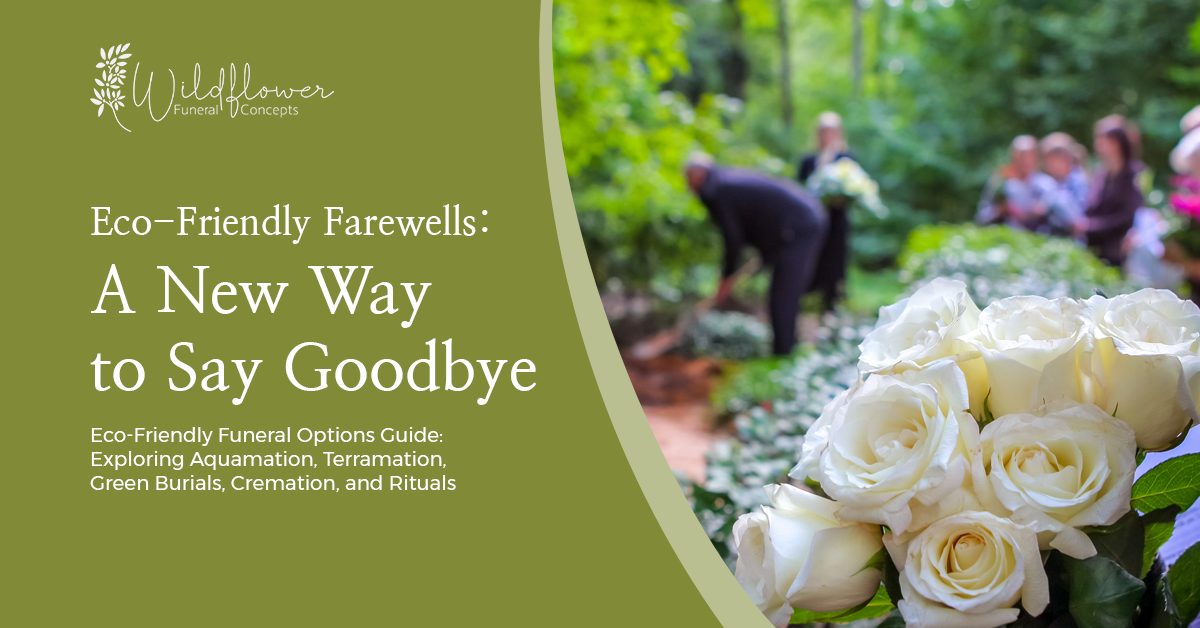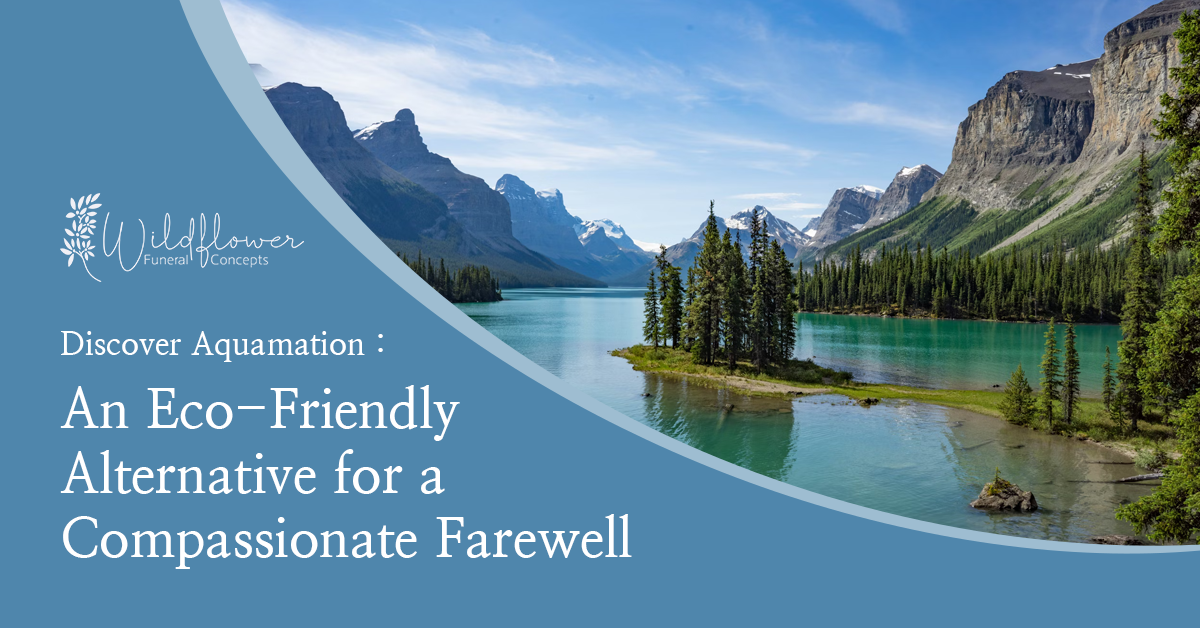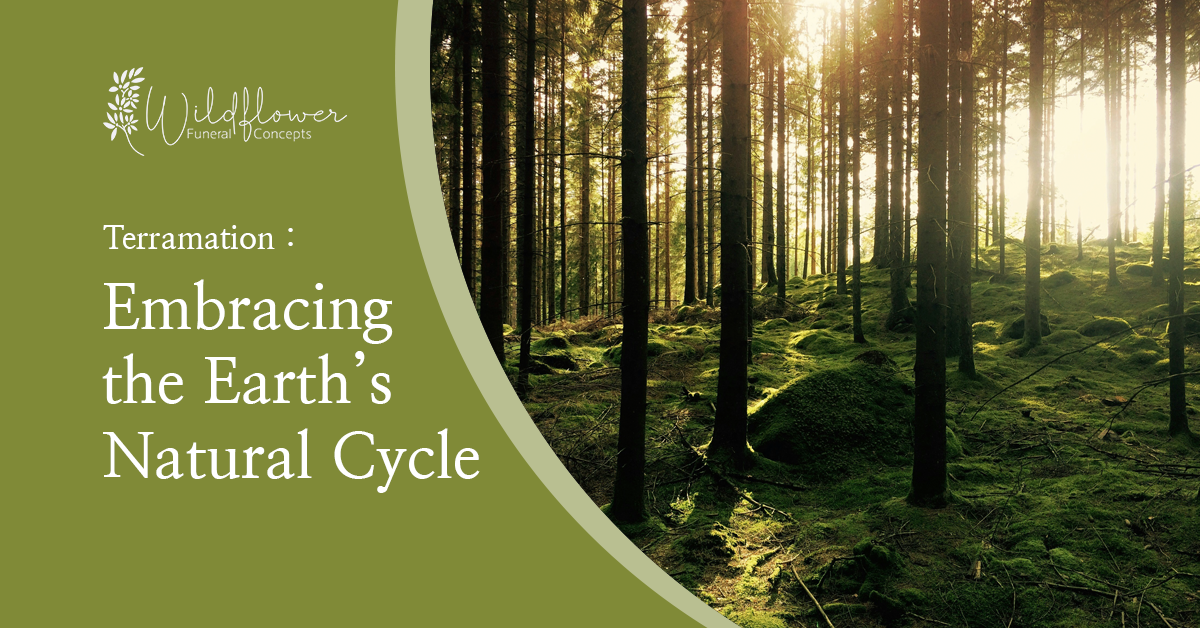At the heart of every life lived lies a story—a story of love, of life, of connection. In the quiet moments after someone has passed, the decisions we make on their behalf continue their story. How do we honor them? How do we ensure that their final act on this earth reflects the values they held dear and perhaps the values they cultivated in us?
There is a growing movement that seeks to honor both the individual and the planet. This movement embraces ecologically sound death care practices that focus on sustainability, compassion, and the natural cycle of life. Whether through aquamation, terramation, green burials, or even cremation, there are opportunities to craft deeply meaningful rituals that celebrate life while healing our relationship with death and nature.
In this guide, we’ll explore these end-of-life options—methods that are as much about honoring the earth as they are about saying goodbye.
1. Aquamation: Water and Transformation
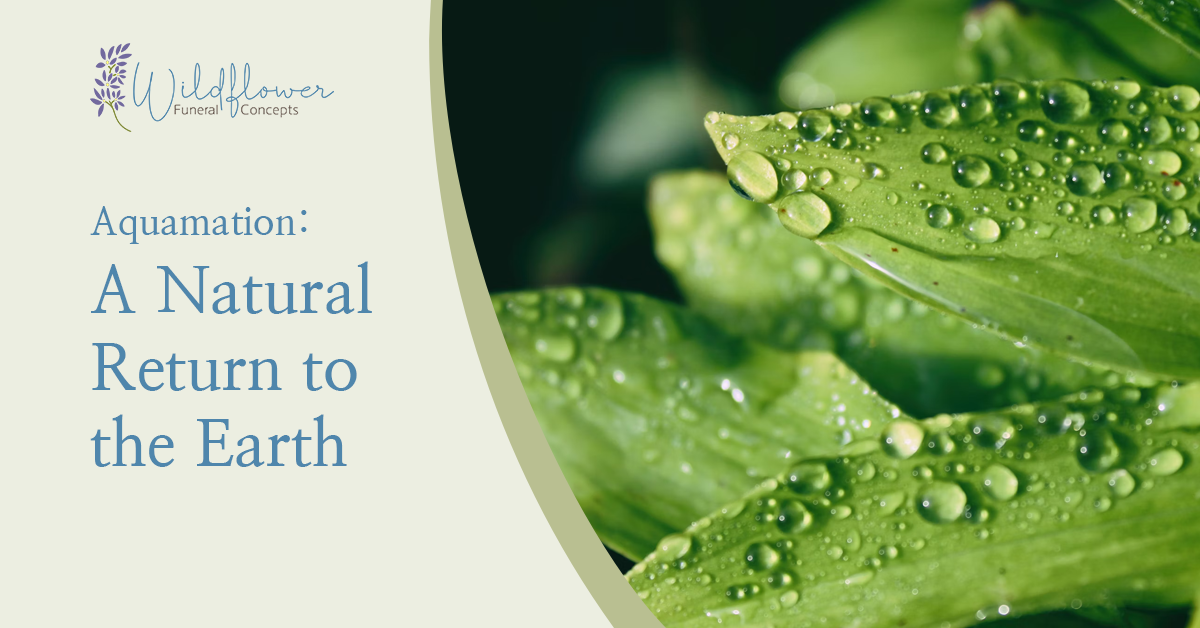
Imagine a quiet river gently winding through an ancient forest. The sound of water is soothing, unhurried, and persistent in its path toward something larger. This is how we may describe aquamation, a method that harnesses the power of water to return us to the earth in a gentle, natural way.
Aquamation, or alkaline hydrolysis, is an innovative, eco-friendly alternative to cremation. Instead of using flame, aquamation uses water, heat, and a carefully balanced alkaline solution to accelerate the body’s natural decomposition. It’s a process that mimics what happens in nature within a matter of hours instead of years.
For families seeking an earth-conscious choice, aquamation offers several benefits:
Low Environmental Impact: It uses 90% less energy than traditional cremation and produces no harmful emissions. Gentle and Respectful: Aquamation is often described as a softer process, aligning with values of care, stewardship, and tenderness.
A Connection to Water: Water has long been a symbol of life, flow, and return. Aquamation honors this symbolism, offering a beautiful way to reconnect with nature.
Familiar Results: Aquamated remains are similar to ashes from cremation. They are returned to the family and can be kept in an urn, scattered in special places, interred in a cemetery, and used in creative ways to memorialize a life.
Learn more about how aquamation can offer a meaningful and sustainable farewell here.
2. Terramation: Becoming Part of the Earth
For many, our Earth is sacred.. It nurtures, grows, and holds us in its care. In the process of terramation, also known as natural organic reduction and human composting, this connection to the earth is profound and reciprocal.
Terramation is a revolutionary method that allows the body to naturally decompose and transform into rich, life-giving soil. The body is placed in a vessel filled with organic materials—wood chips, straw, and alfalfa—and over several weeks, it is transformed into soil that can nourish forests, gardens, conservation and restoration land. It’s a process that aligns with the deepest values of sustainability and renewal.
Imagine a loved one’s legacy living on in the growth of a tree, the flourishing of a garden. The soil produced from terramation is rich in nutrients, a gift to the earth, and a tangible representation of life continuing in a different form.
Why Families Choose Terramation:
- Ecological Sustainability: Terramation reduces carbon emissions and eliminates the need for harmful chemicals, embalming fluids, and synthetic materials.
- A Living Legacy: The resulting soil can be used to nourish the earth, creating a lasting tribute to the deceased and supporting the regeneration of nature.
- Honoring Natural Cycles: Terramation is about embracing the natural cycle of life and death, acknowledging that we, too, are part of the earth’s ecosystem.
To explore this transformative process in more detail, you can find resources on terramation here.
3. Green Burials: Simplicity and Return
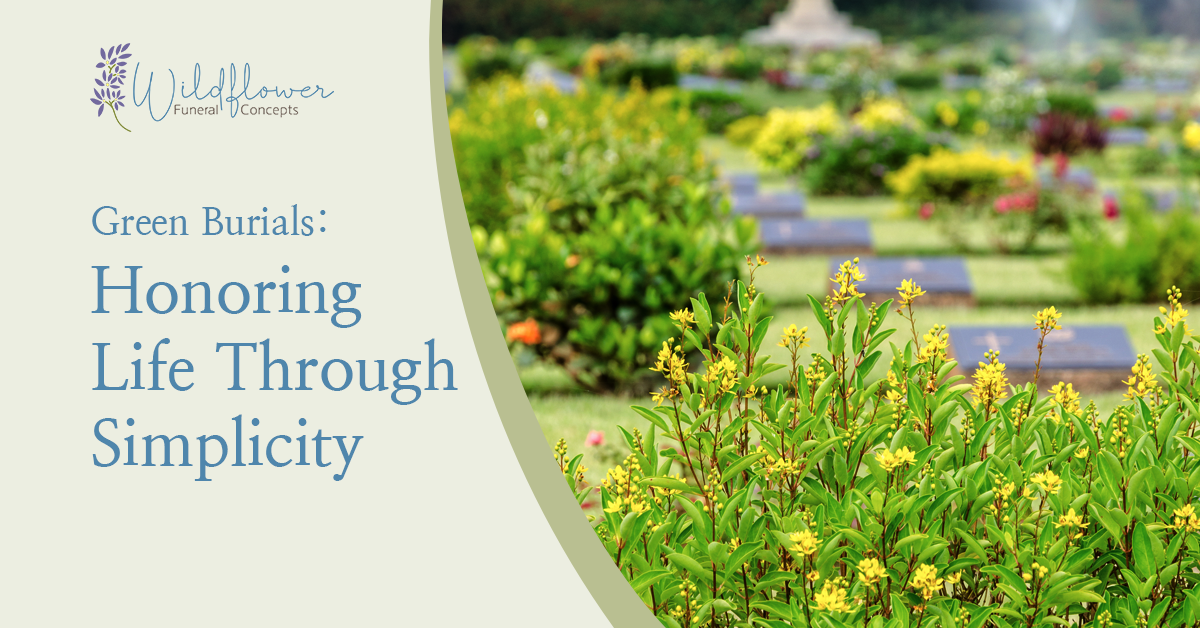
There’s a certain beauty in simplicity. No grand gestures, no elaborate rituals—just a gentle return to the earth. Green burial offers this simplicity. It is an ancient practice, one rooted in our ancestors’ understanding of life’s natural cycle. Today, it provides an eco-friendly alternative for those who wish to have as little environmental impact as possible.
The body is placed in a biodegradable casket or wrapped in a simple cloth shroud in a green burial. No embalming and no concrete vaults or synthetic materials are used. The body is returned to the earth, where it can decompose naturally, feeding the soil and contributing to the ecosystem.
The Appeal of Green Burials:
- Harmony with Nature: Green burials embrace death as a continuation of life—a return to the soil, nourishing the earth.
- Conservation: Many green burial grounds are also conservation areas, where natural landscapes are preserved and protected. Instead of traditional headstones, the graves are often marked with trees, wildflowers, or simple stones.
- Minimal Environmental Impact: Green burials minimize pollution and allow for faster, more natural decomposition by avoiding embalming chemicals and synthetic materials.
For families seeking to honor their loved one in the most natural way possible, green burials provide a peaceful, earth-centered choice. More information on green burials can be found here.
4. Cremation: Tradition Meets Flexibility
Cremation is a practice that has been used for centuries across different cultures. It is a method that offers both tradition and flexibility, allowing families to honor their loved ones in ways that are meaningful to them. In its most basic form, cremation involves the reduction of the body to ashes through high heat. The ashes are then returned to the family, who can choose how to memorialize their loved one.
Many families are drawn to cremation because of its flexibility. Ashes can be scattered in a meaningful place, kept in an urn, or even transformed into memorial jewelry. This flexibility allows for a deeply personal and unique memorial that honors the individual’s life.
Environmental Considerations
However, it’s important to note that traditional cremation does have an environmental impact. The process requires significant energy and produces carbon emissions. For those who are concerned about this, alternative options like aquamation offer a more environmentally friendly choice. At Wildflower Funeral Concepts we are making every effort to minimize our impact with cremation, including making carbon offset donations for each cremation we perform.
To explore cremation and its alternatives more, visit here.
5. The Power of Rituals: Honoring Life Through Meaningful Farewells
Beyond the method of body disposition, rituals provide an essential way to connect with the meaning of life and death. Rituals are stories—stories we tell about who we are, who we have loved, how we have lived, and how we wish to say goodbye. They offer us a way to navigate grief, to find closure, and to celebrate the life that was lived.
Whether it’s through religious rites, personal ceremonies, being supported as we care for the body of our loved one, or a blending of these, rituals give structure to our emotions and help us honor the individual. They allow us to create spaces where grief is acknowledged and love is shared.
Crafting a Personalized Farewell
Rituals do not need to be grand or elaborate to be meaningful. They can be as simple as gathering under the trees, sharing stories, and planting a seed in the soil—a symbol of life continuing. Or, they can be rooted in cultural or religious traditions that have provided comfort for generations.
At the core of every ritual is the intention to make meaning. In death, as in life, we seek to understand our place in the world, to connect with the earth, and to honor the relationships that shaped us.
Choosing What Feels Right
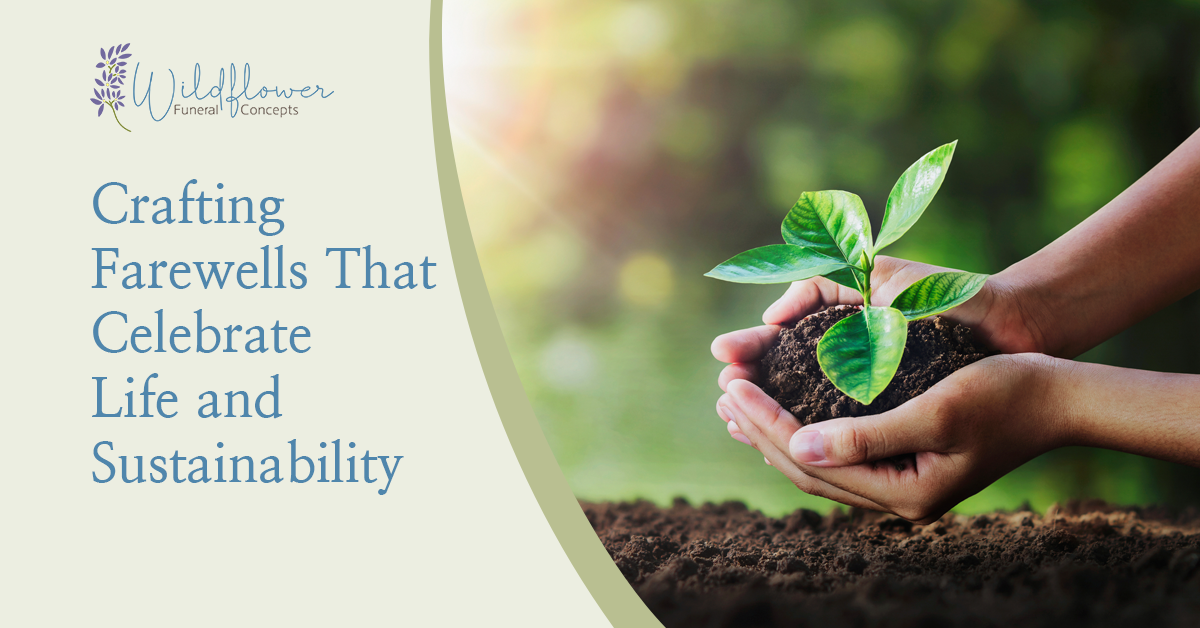
Each of these practices—whether aquamation, terramation, green burial, or cremation—offers a different path for those seeking to honor their loved ones and care for the planet. The beauty of today’s options is that they allow families to choose what feels right for them, what speaks to their values, and what creates the most meaningful farewell.
In the end, the choices we make around death are about more than simply what happens to the body. They are about healing our relationship with death, with grief, and with the earth itself. By choosing methods that align with our values, we create a legacy that lives on—not only in the memories of those we leave behind but also in the very ground beneath our feet.
Visit Wildflower Funeral Concepts for more information on eco-friendly funeral options and how they can provide both meaning and sustainability. Together, we can craft farewells that honor life, death, and the world we live in.


